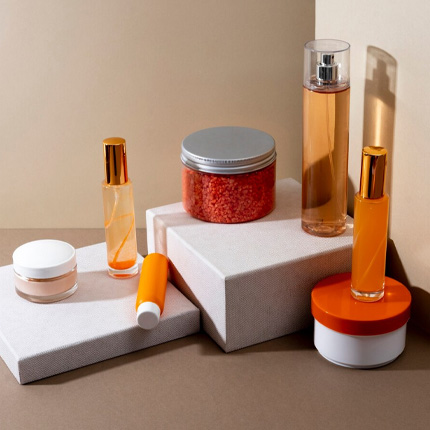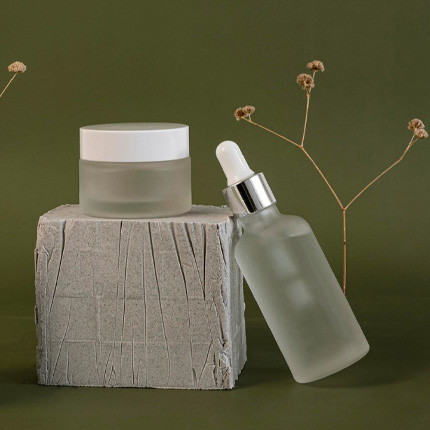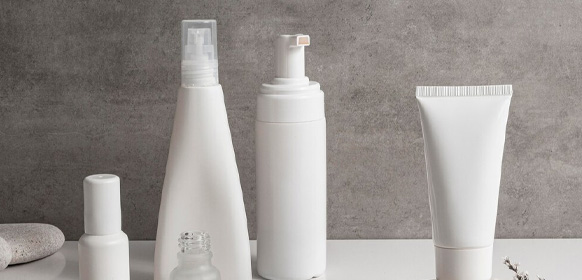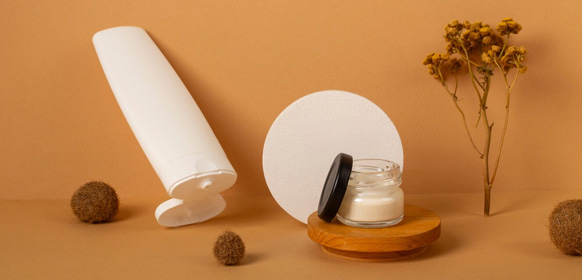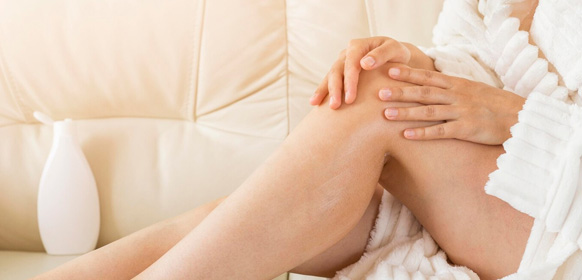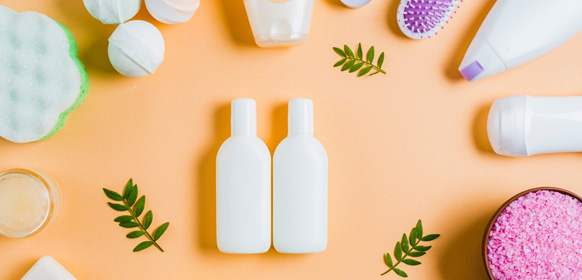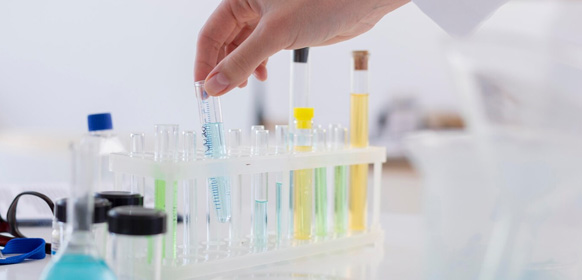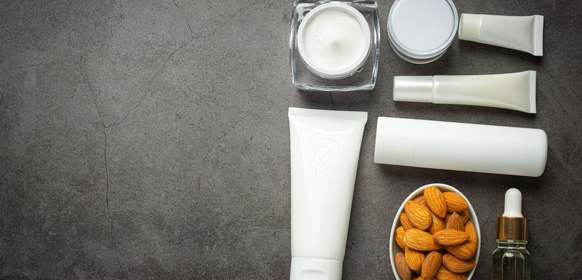

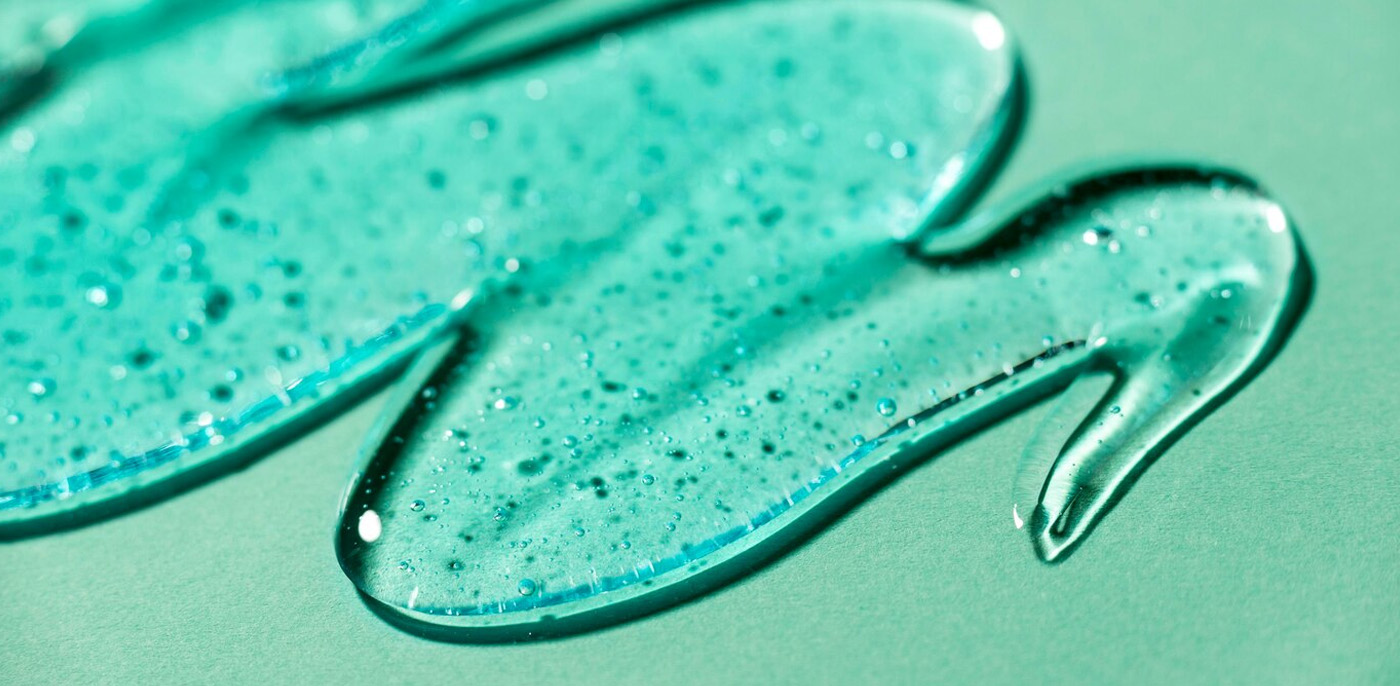
化妆品配方对消费者来说比你想象的更重要:
一项调查发现,72% 的消费者希望品牌解释成分的作用,42% 的消费者认为他们没有获得足够的成分安全性信息。
另一项研究表明,90% 的消费者更喜欢天然成分。
本指南涵盖的内容
但别担心,化妆品配方并不像看起来那么复杂!
通过本指南,我们将带您了解化妆品配方的基础知识。我们将涵盖从基本概念到案例研究和实际步骤的所有内容,所有内容都以简单易懂的方式分解。
无论您是新手还是准备深入了解,我们都有您需要知道的一切。
以下是我们将介绍的内容:
成分 101:化妆品中含有什么?
案例研究:分析流行化妆品
分步指南:化妆品配方过程
成分 101:化妆品中含有什么?
让我们先来分析一下最常见和最基本的成分。
更多地了解这些成分将有助于您了解产品中包含哪些成分,并使您能够做出明智的选择。
|
|
成分类型 |
示例 |
|
1 |
溶剂 |
水、乙醇、丙二醇 |
|
2 |
乳化剂 |
卵磷脂、山梨醇油酸酯、聚山梨醇酯 20 |
|
3 |
润肤剂 |
乳木果油、荷荷巴油、角鲨烯 |
|
4 |
防腐剂 |
对羟基苯甲酸酯、苯氧乙醇、山梨酸 |
|
5 |
香水 |
芳樟醇、香茅醇、香叶醇 |
|
6 |
颜色 |
二氧化钛、氧化铁、群青 |
|
7 |
增稠剂 |
黄原胶、瓜尔胶、卡拉胶 |
|
8 |
吸收剂 |
高岭土、膨润土、二氧化硅 |
|
9 |
填充料 |
云母、滑石、尼龙-12 |
|
10 |
调味剂 |
香兰素、薄荷醇、肉桂醛 |
|
11 |
保湿剂 |
甘油、透明质酸钠、丙二醇Solvents |
溶剂可以视为化妆品成分混合的基料或“搅拌碗”。
它们在溶解成分方面起着至关重要的作用。
例如,它们可以帮助分解色素或视黄醇,使它们易于与其他成分混合。
水、油和酒精是常见的溶剂。例如,水通常用于面霜,而油则用于化妆品。
- 乳化剂
你试过把油和水混合吗?
不可能,对吧?
乳化剂是一种帮助无缝混合油基和水基成分的剂。
油或香脂等产品可能不需要乳化剂,因为它们只由油基成分组成。相反,爽肤水和凝胶是重度水基的,因此可能也不需要它们。
然而,许多化妆品,包括面霜、乳液和护发素,绝对依赖于乳化剂的混合能力。
- 润肤剂
如果一种产品能让您的皮肤感觉光滑,那么润肤剂就发挥了神奇的作用。它们填补皮肤细胞之间的空隙,使皮肤更光滑。
油、酯和脂肪酸都是润肤剂。
您会在保湿霜和口红中找到它们。
- 防腐剂
防腐剂听起来可能并不令人兴奋,但防腐剂却至关重要。
它们可以阻止细菌和霉菌生长,并延长产品的保质期。
一些常见的防腐剂包括对羟基苯甲酸酯和苯甲酸钠。
- 香水
香水可以提升化妆品的档次,为您的产品增添诱人的香气。
然而,香水的作用不只是让产品闻起来香。
它们与用户建立了亲密的联系,增加了再次订购的机会。
- 彩色颜料
色素对于所有类型的彩色化妆品都是必不可少的。
色素是反射和吸收光线以产生不同视觉效果的微小颗粒。在化妆品中,色素既可以是天然的(如甜菜根提取物),也可以是合成的(在实验室中制成)。
它们对于为任何产品添加所需的颜色至关重要。
它们还可以增强产品的外观,使其看起来更美观。
当您查看成分时,您可以通过 CI 前缀轻松识别其中的大部分。
- Thickeners
Thickeners provide stability to cosmetic formulations, improving their viscosity and texture.
This leads to a product with the desired consistency, whether it be a thick cream, a pourable lotion, or a solid stick.
- Absorbents
Absorbents, also known as mattifiers, are tasked with the job of absorbing excess facial oil, often lending their skills to products like oil-free moisturizers and matte lipsticks.
Beyond aesthetic appeal, mattifiers enhance product endurance on the skin, preventing makeup from sliding off due to heat or perspiration.
- Fillers
Next up, we’ll talk about fillers.
Despite their simple name, fillers do more than just ‘fill’.
Fillers bulk up the feel of the product, give it a clean look on your skin, and even play a role in adjusting color.
Some even offer other added effects, like a matte finish or a little extra sparkle.
- Flavouring Agents
They’re a key component in lip products, giving that distinctive taste to your lipsticks and balms.
While they don’t play a functional role, flavoring agents enhance the sensory experience of the product.
- Humectants
Humectants work by drawing moisture from the deeper layers of your skin or directly from the air to the surface.
You’ll mostly find humectants in products designed to boost hydration like moisturizers, creams, serums, and face masks.
Case Study 1: Nivea Face Creme
Let’s have an in-depth look at one of the industry’s staple products – Nivea Creme.
This well-known and beloved skincare solution is a paragon of effective formulation, offering an interesting case study for our exploration.
We’ll unpack the ingredients analyze the formulation:
|
Type / Function |
Ingredient Name |
|
Solvents |
Water |
|
Emollients |
Mineral Oil, Petrolatum, Glycerin, Microcrystalline Wax, Lanolin Alcohol, Paraffin, Decyl Oleate, Octyldodecanol |
|
Humectants |
Glycerin |
|
Thickeners |
Microcrystalline Wax, Lanolin Alcohol, Paraffin, Aluminum Stearates |
|
Emulsifiers |
Aluminum Stearates, Magnesium Sulfate, Magnesium Stearate |
|
Fragrances |
Fragrance |
|
pH Adjusters |
Citric Acid |
|
Preservatives |
Methylchloroisothiazolinone, Methylisothiazolinone |
- Solvent: Helps to dissolve other ingredients and make the overall cream easy to spread.
- Emollients: Soften the skin by sealing in moisture. They fill in gaps in dry skin, creating a smooth surface.
- Humectant: Attracting moisture to the skin, keeping it hydrated and helping it look plumper and healthier.
- Thickeners: Lend texture to the cream, making it soft and easy to apply. They also increase the stability of the formulation.
- Emulsifiers: Ensure all the other ingredients mix evenly and prevent the oil and water-based ingredients from separating.
- Fragrance: Gives the cream its pleasant scent, enhancing the sensory experience of using the product.
- pH adjuster: Balance the pH of the formulation, ensuring it’s safe and comfortable to apply to the skin.
- Preservatives: Preventing the growth of bacteria and fungi in the cream. This ensures the product lasts longer and doesn’t cause skin infections.
Case Study 2: MAC Lipstick
Next, let’s examine another example — MACs’ lipstick.
Even though it’s different from face cream, you’ll see they share some similarities.
Let’s have a look at the key components in a MAC lipstick:
|
Type / Function |
Ingredient Name |
|
Emollients |
Dimethicone, Tridecyl Trimellitate, Phenyl Trimethicone, Dimethicone Crosspolymer |
|
Thickeners |
Polyethylene, Hdi/Trimethylol Hexyllactone Crosspolymer, Silica Dimethyl Silylate (Nano) |
|
Absorbents |
Zeolite, Kaolin, Alumina |
|
Fillers |
Silica, Polysilicone-11 |
|
Preservatives |
Caprylyl Glycol |
|
Emulsifiers |
Polyhydroxystearic Acid |
|
Flavors |
Flavor (Aroma), Sodium Saccharin |
|
Antioxidants |
Tocopherol (Vitamin E) |
|
Colors |
Mica, Titanium Dioxide (Ci 77891), Iron Oxides (Ci 77491), Iron Oxides (Ci 77492), Iron Oxides (Ci 77499), Bismuth Oxychloride (Ci 77163), Blue 1 Lake (Ci 42090), Carmine (Ci 75470), Orange 5 Lake (Ci 45370), Red 6 (Ci 15850), Red 21 (Ci 45380), Red 28 (Ci 45410), Red 30 (Ci 73360), Red 6 Lake (Ci 15850), Red 7 Lake (Ci 15850), Red 22 Lake (Ci 45380), Red 28 Lake (Ci 45410), Red 30 Lake (Ci 73360), Red 33 Lake (Ci 17200), Yellow 5 Lake (Ci 19140), Yellow 6 Lake (Ci 15985) |
- Emollients:These keep the lips feeling soft and smooth by sealing in moisture.
- Thickeners:These are important for giving the lipstick enough body and spreadability.
- Absorbents:They help manage oil and shine on lips.
- Fillers:Used in lipstick to achieve a smooth, creamy texture.
- Preservatives:Keeps the lipstick safe from bacterial and fungal growth.
- Emulsifiers: Makes sure all ingredients mix well together without separating, providing a homogenous product.
- Flavors:Give a pleasant taste to the lipstick.
- Antioxidants:Protects lips from environmental stressors and also helps to keep the product fresh.
- Colors: Provide the range of colors you see in lipsticks.
Cosmetic Formulations: Step by Step
Creating a successful cosmetic formulation is, in essence, a step-by-step process that seamlessly blends science and market understanding.
Here’s a detailed walk-through of this process:
Step 1: Project Briefing and Defining Important Key Metrics
First and foremost, assembling a detailed project brief is vital.
Think of this as a blueprint for your vision.
Write down your desired texture, color, moisturizing capacity, and any other essential attributes.
Be crystal clear about your expectations for this product. Don’t leave anything to interpretation. And don’t forget to communicate to the manufacturer about your pricing objective (target price) for the product.
Step 2: Drawing Inspiration from Successful Products
Having an existing product as a blueprint often provides a good starting point for new formulations. It acts as a rough benchmark, or you reengineer it 1to1. Either way, you can then change it according to your liking.
As per a report by Cosmetics Business, these successful products’ influence leads to consistent quality and innovative breakthroughs in new developments.
Step 3: Conception of Formulation
Once the preliminary steps pave the way, formulators take over. They meticulously select and blend various ingredients like emollients, thickeners, preservatives, fragrances, and colors.
The goal is to precisely meet the project briefing’s outlined targets while maintaining quality and safety standards.
Step 4: Creating the first Sample
Now that the formulation of your chosen cosmetic product has been conceived, the exciting stage of actually creating that first sample begins.
This process is where the concept becomes a tangible reality.
Keep in mind, perfect cosmetic products, like Rome, aren’t built in a day.
The primary blend a manufacturer makes, influenced by popular products of a similar kind, isn’t the final product.
It’s merely the starting point for your product.
Step 5: Sample Revision and Perfection
There is typically only a limited number of free revisions set by the cosmetic manufacturer, so you have to make them count.
Use your senses — how does it feel when applied? Is the scent pleasing? How does it sit on the skin after some time?
Take detailed notes as you evaluate each characteristic.
As a formulator, it’s their responsibility to assure every aspect aligns with what the consumer wants.
Once you’ve identified areas requiring improvement, communicate these with your manufacturer.
Be articulate and precise — use specific language and give clear directives.
Remember, vague feedback gets vague revisions, and that’s not something we can afford with a limited number of opportunities to get it right.
Following this process, your manufacturer will revise the sample to meet your updated guidelines.
And then repeats the cycle — revise, perfect, and repeat.
Step 6: Choose a Packaging
Packaging, a critical yet often overlooked aspect of cosmetics, can greatly affect a product’s success.
Many manufacturers opt for pre-existing packaging options for cost and convenience, with a wide variety of bottles, jars or tubes available.
The selection should align with a product’s size, price point and the compatibility of packaging materials with the cosmetic formulation.
Your packaging is the first point of contact with your customers, so let it make a good impression and mirror your brand image.
Step 7: Compatibility- and Stability Testing
Now, we’re ready to dive into the final integral phase of cosmetic formulation: ensuring the product’s stability and compatibility.
During the compatibility test, the product is exposed to varying conditions, such as different levels of light, temperature fluctuations, and changes in moisture, to scrutinize how well the ingredients play together.
Signs of potential issues could include separation of components, alterations in the hue, or an unexpected change in texture.
Stability testing is the checkpoint that guarantees the product’s quality longevity.
Here, the core aim is to assure us that our cosmetic product maintains its essential physical, chemical, and microbial characteristics intact throughout its lifespan, regardless of storage conditions or how it’s used. This involves examining parameters like pH level, viscosity, scent, color, and the efficiency of the preservatives within the mix.




